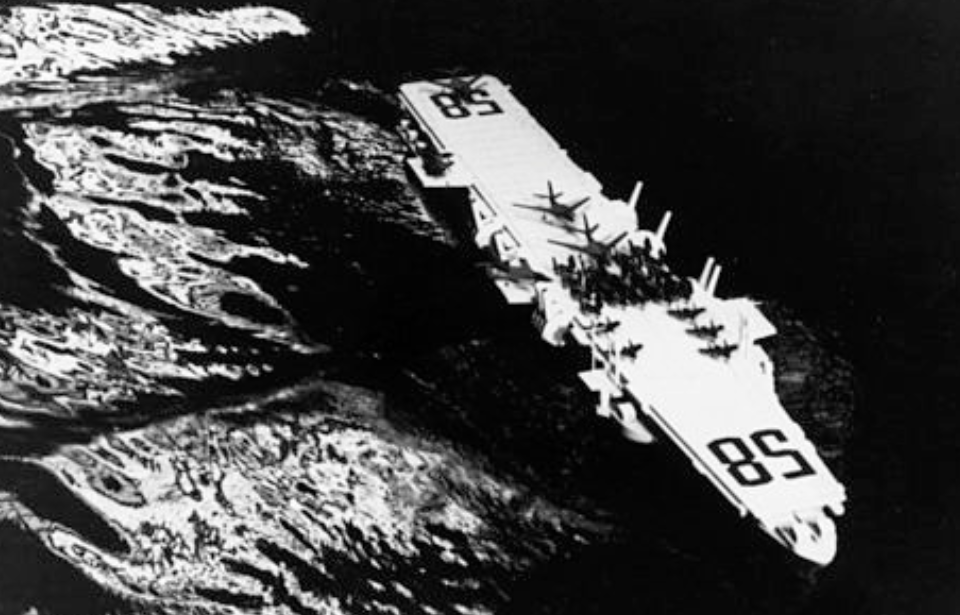In the early years of the Cold War, the US Navy began looking into the development of “supercarriers” to help defend the nation. What arose from these discussions was the USS United States (CVA-58). While initially intended to be the logical next step in carrier technology, the project was ultimately scrapped after the newly-formed US Air Force butted in, causing mayhem among military officials.
Why was the USS United States (CVA-58) conceived?
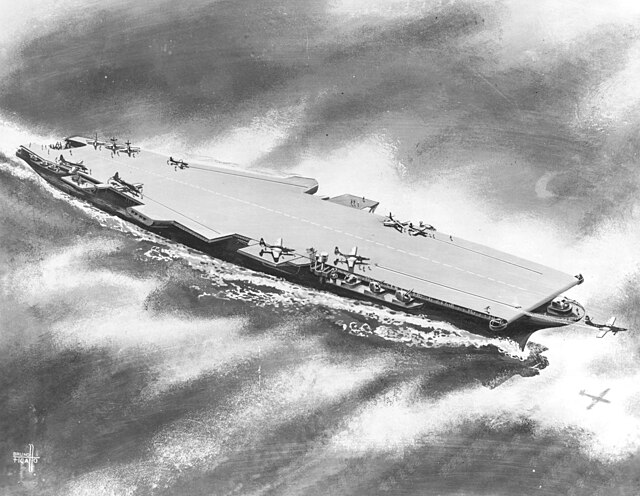
The USS United States (CVA-58) was to be a revolutionary supercarrier that would increase America’s naval power in the post-war era. Born out of the need to support large, long-range bombers carrying nuclear weapons, it came at a time when the world was grappling with the development of atomic equipment, with the US Navy, in particular, looking for a more capable vessel.
US President Harry S. Truman approved the construction of five such “supercarriers” as part of the Naval Appropriations Act of 1949.
The primary operations United States would conduct involved the carrying of long-range bombers capable of delivering nuclear payloads. This was seen as essential for nuclear deterrence, especially as tensions with the Soviet Union continued to grow. The ship was also intended to provide tactical air support for amphibious missions and conduct sea control tasks.
Designing a brand-new supercarrier
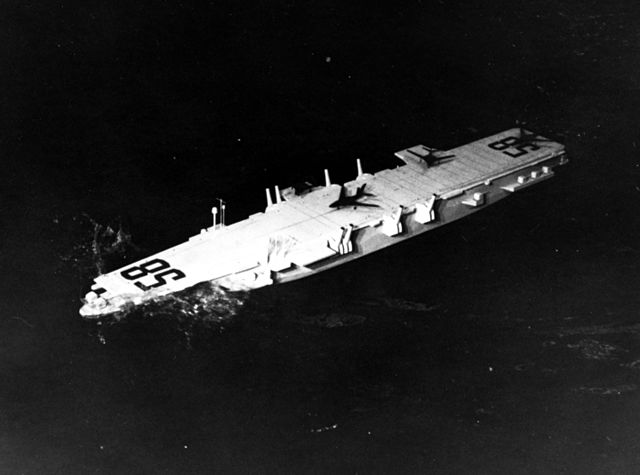
Designing the USS United States fell under the purview of Adm. Marc Mitscher, an advocate for large carriers capable of handling the most advanced aircraft of the day. His wartime experiences had convinced him of the need for ships that could operate farther from enemy shores, meaning aircraft capable of longer-range action were also needed, like the McDonnell FH-1 Phantom and the Lockheed P2V Neptune.
Discussions centered around developing a carrier that could support the weight and size of these new aircraft, which were both larger and heavier than their World War II counterparts. United States was to be flush-decked, meaning she wouldn’t have an island superstructure, to maximize space for aircraft operations.
This brought with it several challenges, including how to manage smoke from the vessel’s power plants and where to place radar and other essential command and control equipment. Some of the solutions included using a command ship to handle any radar duties and relying on aircraft for early warning and detection.
USS United States (CVA-58) specs.
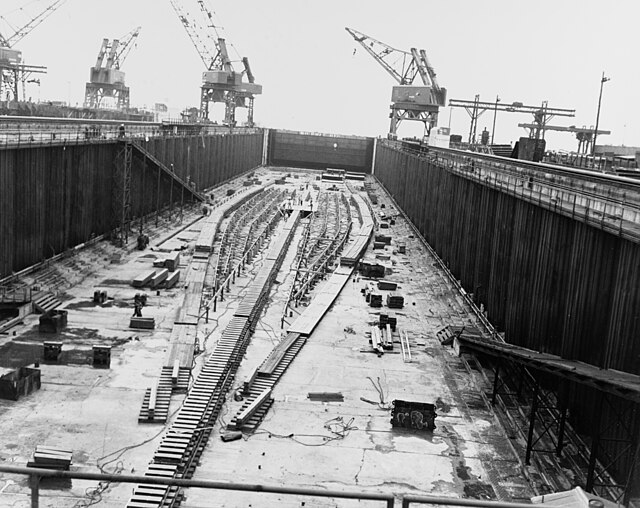
The USS United States would be massive, with a displacement of 83,200 tons when fully loaded. She was designed to be 1,090 feet in length, with a beam of 125 feet at the waterline and 190 feet at the flight deck. This was necessary to support the aircraft she was designed to carry.
As aforementioned, the aircraft carrier lacked an island superstructure. She was to be equipped with four aircraft elevators at the deck edges, to avoid compromising the structural integrity of the flight deck. She also featured four catapults, two at the bow and two staggered along the flight deck, to launch aircraft.
In terms of armament, United States was designed to carry eight 5-inch/54-caliber guns in single mounts, sixteen 76 mm/70-caliber guns in twin mounts, and twenty 20 mm Oerlikon cannons in twin mounts.
Cancelling the USS United States (CVA-58)
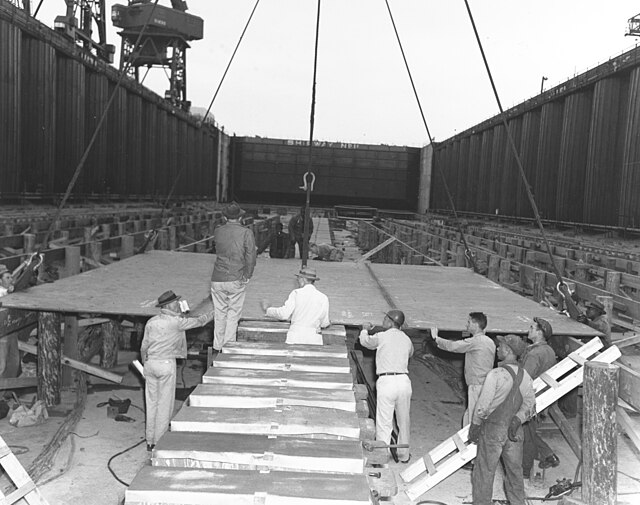
Despite the significant resources already invested into the carrier’s development, the USS United States was abruptly canceled just five days after her keel was laid on April 18, 1949. This was driven by inter-service rivalries and budgetary constraints.
The US Air Force viewed the vessel as a direct threat to its strategic bombing mission, which relied on land-based bombers, and Secretary of Defense Louis A. Johnson, a proponent of the service’s doctrine, canceled the project to both avoid redundancy and reduce military spending.
This sparked immediate controversy and led to the resignation of Secretary of the Navy John Sullivan in protest. It also triggered the “Revolt of the Admirals,” a host of public and private protests by senior US Navy officers who argued that larger carriers were essential for national defense. Despite their efforts, they failed to convince Congress to reverse the decision.
From supercarrier to luxury ocean liner
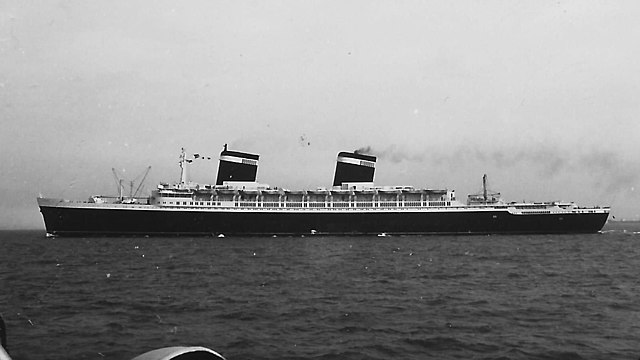
The cancellation of the USS United States had an unexpected outcome. The dry dock freed up by the dismantling of the carrier’s keel was repurposed for the construction of the SS United States, a luxury ocean liner. The ship was designed by naval architect William Francis Gibbs and built at the Newport News Shipbuilding and Drydock Company, the same yard that had started work on the supercarrier.
More from us: The USS Jimmy Carter (SSN-23) is Just One of Three Submarines to Be Named for a Living Person
Are you a fan of all things ships and submarines? If so, subscribe to our Daily Warships newsletter!
Embarking on her maiden voyage in 1952, the SS United States became the fastest ocean liner to cross the Atlantic. While she was a commercial vessel, she was built with the potential to be converted into a troopship, should the need arise.
